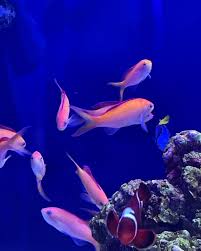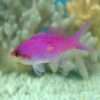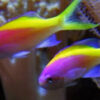The Combination of Dragons and the Yin-Yang Elements in Eastern Philosophy

In Eastern philosophy, few concepts are as fundamental and influential as the principles of Yin and Yang, which represent the duality of the universe. This ancient understanding of balance and harmony between opposing forces is deeply embedded in various aspects of Chinese culture, including art, medicine, and spirituality. One of the most fascinating and enduring symbols within this framework is the dragon. The dragon, a powerful mythical creature revered in many Eastern traditions, often symbolizes both Yin and Yang, manifesting the dynamic relationship between opposing forces.
In this article, we explore how the dragon, with its dynamic presence and symbolism, embodies the concepts of Yin and Yang and how its representation in Eastern culture provides insight into the balance of life, nature, and the universe. By examining the intertwining of these elements, we can better understand the profound role the dragon plays in Eastern philosophy.
Understanding Yin and Yang in Eastern Philosophy
The philosophy of Yin and Yang originates from Daoism, a school of thought that emphasizes the importance of harmony with the natural world. According to this philosophy, everything in the universe consists of two opposing but complementary forces: Yin, which represents the passive, receptive, and feminine aspects, and Yang, which represents the active, dynamic, and masculine aspects. These forces are not seen as absolute opposites but as interdependent, constantly interacting and balancing each other.
Yin is often symbolized by the moon, darkness, water, and femininity, while Yang is symbolized by the sun, light, fire, and masculinity. Together, Yin and Yang create a state of equilibrium, and the universe is believed to operate most effectively when these forces are in harmony. This balance is seen not only in nature but also in human beings, whose health and well-being are thought to depend on maintaining the equilibrium between Yin and Yang.
In Daoism, the balance between these forces is also seen in the concept of Qi (Chi), the life force or energy that flows through all living things. The harmony of Yin and Yang allows Qi to flow smoothly, resulting in health, prosperity, and spiritual enlightenment. The dragon, with its connection to the elements of nature and the cosmos, embodies the flow and balance of Qi, and its symbolism in Eastern traditions is intricately linked with the principles of Yin and Yang.
The Dragon as a Symbol of Balance
The dragon in Eastern mythology is often seen as a symbol of power, wisdom, and auspiciousness. It is a creature that embodies the forces of nature and the universe, and its presence is typically associated with strength, protection, and transformation. In Chinese culture, the dragon is a representation of imperial authority and the celestial realm, often depicted as controlling the elements of water, fire, and wind, all of which are fundamental to the balance of nature.
The dragon is not merely a force of destruction but also a symbol of growth and renewal. In the context of Yin and Yang, the dragon embodies both the active and passive aspects of existence. On one hand, the dragon represents Yang through its dynamic and powerful qualities: it is a creature of the heavens, commanding the natural forces and soaring through the skies. On the other hand, it also represents Yin through its connection to the earth, water, and mystical realms. The dragon’s ability to control water, a key element of Yin, demonstrates its connection to the receptive, life-giving aspects of the universe.
In the Chinese cosmological system, the dragon is associated with the five elements: wood, fire, earth, metal, and water. These elements interact with each other in a cycle of creation and destruction, and the dragon is often seen as a guide through these elemental forces. As the Yang energy, the dragon represents the drive for creation, transformation, and movement. It embodies the energetic force that brings change and drives evolution. Conversely, when the dragon is depicted in relation to water, which symbolizes Yin, it represents the nurturing, supportive, and transformative aspect of creation.
The Dragon and the Five Elements
The Five Elements theory, a foundational concept in traditional Chinese philosophy, holds that everything in the universe is composed of five basic elements: Wood, Fire, Earth, Metal, and Water. These elements are believed to interact in cycles of creation and destruction. While each element has its own characteristics, the dragon is closely associated with the element of Water, which, in turn, is governed by Yin energy.
Water in Chinese philosophy is symbolic of adaptability, fluidity, and calmness. It represents the qualities of Yin, as it is cool, receptive, and nourishing. The dragon’s ability to control and move through water highlights its connection to Yin, as it is a force that nurtures and sustains life. The dragon is often shown as emerging from or diving into rivers, lakes, and oceans, embodying the infinite potential of water to bring life and support.
On the other hand, Fire represents Yang, as it is hot, active, and dynamic. The dragon’s association with fire is evident in its ability to breathe fire and control the fiery elements of nature. Fire, as an active force, represents the passion, creativity, and destruction that Yang embodies. The dragon’s dual connection to both fire and water reflects the delicate balance between Yin and Yang: while water nourishes and sustains, fire inspires and transforms.
The other elements of Wood, Earth, and Metal also play crucial roles in the dragon’s symbolic presence. Wood, which symbolizes growth and vitality, aligns with the dragon’s capacity for evolution and change. Earth, as a grounding force, reflects the dragon’s connection to the physical realm and the material world. Finally, Metal represents structure and discipline, qualities that the dragon embodies in its role as a guardian and protector of the natural order.
The Dragon as a Mediator Between Yin and Yang
In Eastern mythology, the dragon is often seen as a mediator between the various forces of nature. The dragon is both a symbol of imperial power and a spiritual being that traverses the realms of heaven, earth, and the underworld. As a creature that spans all of these realms, the dragon represents the harmonious integration of opposites, making it an ideal symbol for the combination of Yin and Yang.
In Daoist teachings, dragons are believed to possess the ability to transcend the duality of Yin and Yang, existing beyond the realm of opposites and embodying the unity of the universe. The dragon, therefore, symbolizes the unity of the cosmos, where all dualities are reconciled. The dragon’s role as a mediator is evident in its power to bring harmony between these forces, ensuring the balance of the natural world.
In Chinese art, the dragon is often depicted in a yin-yang spiral pattern, with its body coiled around itself, symbolizing the endless cycle of creation, destruction, and rebirth. This representation highlights the dragon’s ability to integrate both Yin and Yang, embodying the eternal cycle of life. By merging these two opposing forces, the dragon becomes a symbol of cosmic unity and a reminder that life is a continual process of change and transformation, driven by the interaction of Yin and Yang.
Dragons and the Role of Balance in Personal and Spiritual Growth
In the context of personal growth and spiritual development, the concept of Yin and Yang is central. The dragon serves as a powerful symbol of this balance, reminding individuals of the need for both active and passive forces within their lives. In Chinese medicine, for example, the balance of Yin and Yang is essential for health and well-being. Just as the dragon combines these forces in the natural world, individuals must find balance within themselves in order to achieve harmony in their lives.
The dragon also plays a role in guiding individuals on their spiritual journey. In many myths, the dragon represents wisdom, enlightenment, and transformation. It is a powerful force that can help individuals overcome obstacles, transform their circumstances, and achieve a deeper understanding of themselves and the universe. In this sense, the dragon symbolizes the spiritual balance that is necessary for personal growth, with its ability to embody both the active and receptive qualities of Yin and Yang.
Conclusion
The combination of the dragon and the elements of Yin and Yang in Eastern philosophy reveals the profound interconnectedness of the natural world, human life, and the spiritual realm. As a symbol of balance and transformation, the dragon represents the dynamic interaction of opposing forces, reminding us of the need for harmony in all aspects of life. By embodying both Yin and Yang, the dragon transcends dualities, offering a powerful model for personal and spiritual growth.
The dragon’s role in the balance of Yin and Yang is not just a reflection of the natural world, but a guide for how we can navigate the complexities of our own existence. In a world that constantly shifts between opposites—light and dark, active and passive, creation and destruction—the dragon serves as a timeless symbol of the eternal dance between these forces, reminding us of the need for balance, unity, and transformation in our lives.

